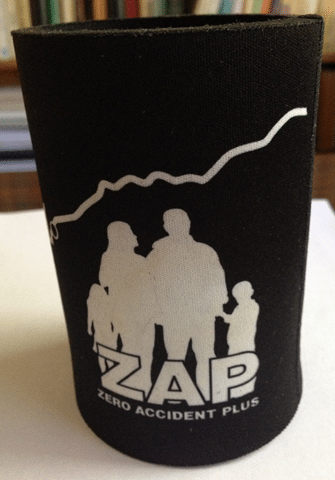Originally posted on March 22, 2014 @ 8:56 AM
Ten Risk and Safety Program Essentials
Guest article Dr Rob Long from Human Dymensions. Image sent in by a reader of this blog.
 I read yet another ‘beyond zero’ website the other day and never stop to be amazed at just how much people accept nonsense language and spin. The site claimed to take organisations to ‘the next level’ – how was this proposed? More audits and risk assessments. Wow, how is this going to ‘the next level’?
I read yet another ‘beyond zero’ website the other day and never stop to be amazed at just how much people accept nonsense language and spin. The site claimed to take organisations to ‘the next level’ – how was this proposed? More audits and risk assessments. Wow, how is this going to ‘the next level’?
How do we improve the engagement with risk and safety by more of the same?
If you or your organisation are looking to go to ‘the next level’ in risk and safety I have ten suggestions:
-
Reduce all paper-based modes of assessment and thinking to the absolute minimum. Facilitate staff to understand risk and safety bureaucracy as thinking tools not ‘ends’ in themselves.
-
Un-learn the prioritization of systems-only approaches to managing risk and shift the focus back on to people, relationships and social arrangements.
-
Learn more about the psychology and social psychology of risk and gain a better understanding of human judgment and decision making.
-
Stop talking in meaningless negative discourse and start engaging in language that is positive and meaningful to employees. My research shows than more than 60% of workers find the language of absolutes, perfectionism and zero, alienating, failure and blame focused and, fodder for cynicism. Encourage someone in the organisation to study semiotics and semiology and reform organizational culture through discourse dynamics.
-
Develop non-regulatory relationships with the regulator and non-regulatory relationships throughout the organisation.
-
Develop a stronger focus on communication, collaboration and dialogue skills. Start with a read of HB 327:2010 Communicating and Consulting About Risk.
-
Focus much more on skilling front line supervision. Start by improving the social and psychological skills of supervisors. Help by getting them away from email and computers and into better engagement in the field.
-
Shift the focus and discourse of your organisation from vigilance, compliance, ‘dumb down’ and punishment to, learning, culture and thinking.
-
Develop a radar for ‘tick and flick’, ‘overconfidence’, rushing and ‘double speak’ and when detected, do something about it, not through punishment but by looking at what the organisation does to foster these dangerous cultural conditions.
-
Open up positivity to collaborative risk and safety processes rather than viewing committees as some form of irrelevant and punishing side process in the organisation.



Do you have any thoughts? Please share them below